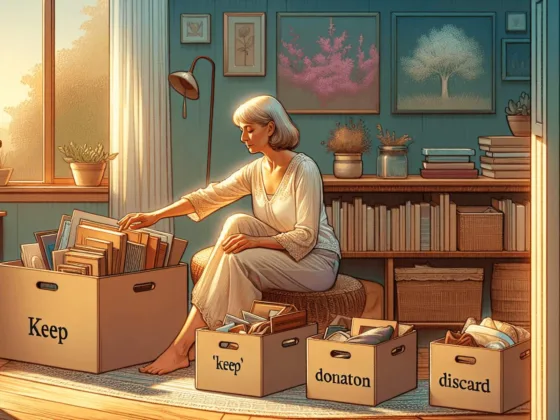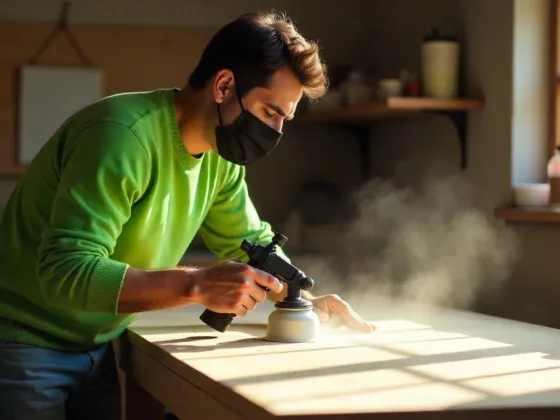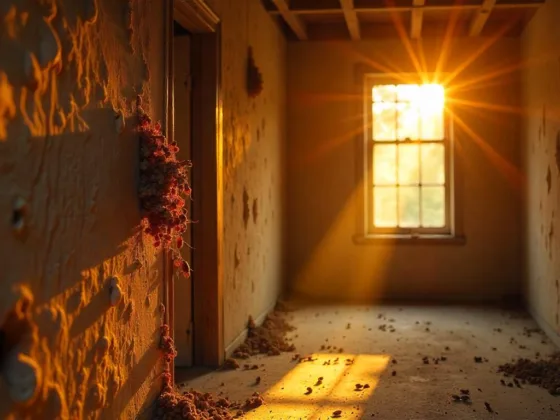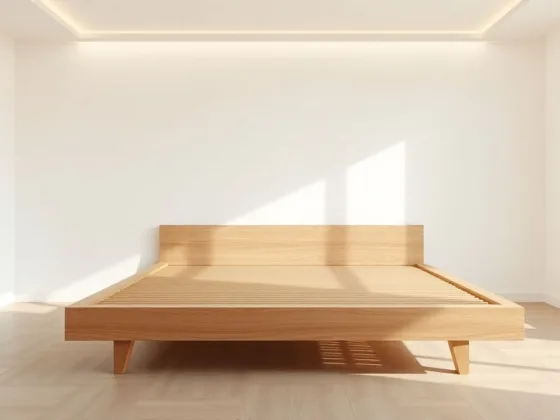Introduction
Swedish Death Cleaning, or döstädning, is an approach to decluttering and minimalism that has gained significant popularity in modern society. Originating from Sweden, this method involves the thoughtful process of sorting through your belongings to make life easier for yourself and your loved ones. Unlike typical decluttering methods, Swedish Death Cleaning emphasizes not only physical tidiness but also emotional and spiritual well-being.
Key Benefits of Swedish Death Cleaning
- Improved Organization: Streamlining your possessions leads to a more organized living space, as outlined in this complete guide to decluttering and reorganizing your living space.
- Enhanced Mental Well-Being: A clutter-free environment can reduce stress and anxiety. You can achieve this by following these 8 easy steps to declutter your home.
- Fostering Meaningful Relationships: By sharing or gifting items, you create deeper connections with others.
Thinking about the benefits, it’s easy to see why many are adopting this method. Imagine the peace of mind that comes with knowing your space is clear and manageable. Consider taking the first step towards implementing Swedish Death Cleaning in your own life. With a few mindful actions, such as those suggested in these ideas to declutter your home, you can transform your home and enhance your overall well-being.
Understanding the Concept of Swedish Death Cleaning
Swedish Death Cleaning, or döstädning in Swedish, is a practice deeply rooted in Scandinavian culture. The term merges the words for “death” (dö) and “cleaning” (städning) to describe a thoughtful approach to decluttering one’s life in preparation for the end of life. This method is not merely about tidying up but involves a profound reflection on what truly matters.
Margareta Magnusson, a Swedish artist and author, propelled this concept into the global spotlight with her insightful book, The Gentle Art of Swedish Death Cleaning. Magnusson’s work emphasizes that this process is less about morbidity and more about making life easier for ourselves and our loved ones. She suggests that by systematically organizing and reducing our possessions, we can avoid leaving behind a significant burden for family members after we pass away.
Key Elements of the Swedish Death Cleaning Philosophy
- Cultural Context: Originating from a culture known for its minimalist aesthetics and practical sensibilities, Swedish Death Cleaning reflects broader Scandinavian values of simplicity and mindfulness.
- Philosophical Underpinnings: This method champions intentional living. It encourages individuals to evaluate their belongings not just based on utility but emotional significance as well.
- Beyond Physical Decluttering: While the initial focus might be on physical items, the philosophy extends to emotional and spiritual realms. It invites introspection about what possessions mean to us and how they reflect our lives’ narratives.
Practical Steps Towards Decluttering
To embrace this philosophy, one can adopt various decluttering tips that align with the principles of Swedish Death Cleaning. These include:
- Evaluating Your Belongings: Assess each item based on its utility and emotional significance.
- Systematic Organization: Implement strategies to organize your home effectively.
- Letting Go: Understand the liberating feeling associated with letting go of unnecessary items.
Emotional and Spiritual Dimensions
Swedish Death Cleaning offers more than just a neat home. It provides:
- Emotional Relief: Letting go of unnecessary items can be liberating, helping reduce anxiety associated with clutter.
- Spiritual Clarity: Sorting through personal artifacts can be a journey of self-discovery, revealing what holds true value in one’s life.
- Stronger Relationships: Sharing stories behind cherished items can foster deeper connections with loved ones, creating lasting memories.
Understanding this cleaning philosophy allows us to see it as an empowering tool for both simplifying our lives now and ensuring we leave a meaningful legacy. Incorporating effective spring cleaning and decluttering tips into our routine can further enhance this process, making it manageable and enjoyable.
The Psychology Behind Embracing Minimalism in Life and Death
The Psychological Impact of Decluttering on Mental Health
Decluttering isn’t just about tidying up your space; it’s a powerful tool for enhancing mental health. Research shows that a cluttered environment can lead to higher levels of stress and anxiety. Removing unnecessary items creates a more serene atmosphere that promotes relaxation and focus.
According to a study published in the Personality and Social Psychology Bulletin, individuals with cluttered homes exhibited higher cortisol levels, a stress hormone. This finding underscores how physical clutter can translate into mental chaos.
To combat this, consider some decluttering secrets for a cleaner home or explore the benefits of decluttering which show that such changes can significantly enhance our mental well-being.
Benefits of Minimalism: Greater Happiness, Reduced Stress, and Meaningful Existence
Embracing minimalism offers several psychological benefits:
- Greater Happiness: Owning fewer possessions allows you to appreciate what you have. This shift in focus from material wealth to personal fulfillment fosters a sense of contentment.
- Reduced Stress Levels: A minimalist lifestyle reduces decision fatigue by limiting the number of choices you need to make daily. With fewer items to manage, your mind is free to concentrate on more important tasks.
- Meaningful Existence: Simplifying your surroundings encourages introspection and clarity. You become more attuned to your values and priorities, leading to a life that aligns more closely with what truly matters to you.
Dr. Sherrie Bourg Carter, a psychologist specializing in stress management, notes, “Eliminating clutter can clear the way for clearer thinking.” When your living space is organized, it reflects an organized mind.
Expert Insights on Minimalism and Well-being
Experts like Joshua Becker, author of The More of Less, argue that minimalism is not about deprivation but about intention. By curating your environment thoughtfully, you invite positive energy into your life.
Incorporating these principles into Swedish Death Cleaning means you’re not just preparing for the future; you’re improving your current quality of life. This holistic approach ensures that minimalism touches both your physical and emotional well-being.
If you’re planning on moving soon, remember that packing up and organizing your move can also be an opportunity for decluttering. And if you’re considering deeper cleaning or large-scale decluttering, understanding the ins and outs of dumpster rentals could be beneficial.
Step-by-Step Guide: How to Practice Swedish Death Cleaning Effectively
1. Assessing Your Belongings: A Mindful Approach to Decluttering
Taking a mindful approach to decluttering is essential for effective Swedish Death Cleaning. Here’s how you can do it:
Set Clear Intentions
Begin by understanding why you want to declutter. Whether it’s to simplify your life, reduce stress, or leave a manageable estate for loved ones, having a clear purpose will guide your decisions.
Start Small
Tackling everything at once can be overwhelming. Choose a small area—like a single drawer or closet—and work your way up to larger spaces. This makes the process more manageable and less intimidating.
Create Categories
Divide your belongings into categories such as clothing, books, documents, sentimental items, and digital files. This method helps in systematically going through each type of item without feeling overwhelmed.
Ask the Right Questions
When evaluating each item, consider:
- Does this item bring me joy?
- Is it useful or necessary?
- Would someone else benefit from having this?
Use Mindfulness Techniques
Practice mindfulness by being present and aware during the decluttering process. Take deep breaths, focus on one item at a time, and avoid rushing through decisions.
Document Your Progress
Keep a journal or checklist for organizing belongings to track what you’ve accomplished. This visual representation of progress can be motivating and provide a sense of achievement.
Practical Techniques for Evaluating Possessions
To make informed decisions about what stays or goes, employ some practical techniques:
The Box Method
Place items you’re unsure about in a box. Seal it and note the date on it. If you haven’t needed or thought about these items after six months, it’s likely safe to let them go.
The One-Year Rule**
If you haven’t used an item in the past year, consider whether it’s worth keeping. Seasonal items and emergency supplies are exceptions but should still be scrutinized periodically.
Sentimental Items**
For sentimental belongings that are hard to part with:
- Take photos of the items before letting them go.
- Keep only a few representative pieces that hold the most meaning.
- Share stories and memories associated with these items with loved ones.
By approaching decluttering mindfully and systematically assessing your possessions, you can transform Swedish Death Cleaning from a daunting task into an empowering journey toward simplicity and peace of mind. Incorporating elements of minimalism can also enhance this process, allowing you to create cozy minimal living spaces that reflect your true self while making it easier to manage your belongings.
2. Implementing the Red Dot System: Making Quick Decisions on What Stays or Goes
The red dot system is an ingenious method to streamline the decision-making process during Swedish Death Cleaning. Here’s how it works:
- Gather Supplies: Start by gathering red stickers or dots and a notebook.
- Label Items: As you go through your belongings, place a red dot on items you’re unsure about or need more time to decide on.
- Set a Time Limit: Decide on a reasonable timeframe to revisit these items, such as one week or one month.
- Reevaluate Decisions: After the set period, reassess each item with a red dot. If you haven’t used it or felt its absence, consider letting it go.
This method helps break down the decluttering process into manageable steps without feeling overwhelmed.
Checklist for Organizing Belongings Using the Red Dot System
Step 1: Sort Through Categories
- Clothes
- Books
- Kitchenware
- Sentimental items
Step 2: Apply Red Dots
- Place red dots on items you’re unsure about.
Step 3: Set Revisit Date
- Schedule a date in your calendar to reevaluate.
Step 4: Reassess and Decide
- If an item still has no clear purpose, consider donating or recycling it.
This systematic approach not only simplifies the Swedish Death Cleaning process but also ensures that decisions are made thoughtfully and intentionally.
3. Tackling Digital Clutter: Organizing Your Virtual Spaces for Peace of Mind
Addressing digital clutter is just as crucial as managing physical items. A disorganized digital space can lead to stress and inefficiency, which hinders your ability to focus on what truly matters. Here are some strategies for maintaining an organized online presence:
Email Management
- Unsubscribe: Regularly unsubscribe from newsletters and promotional emails you no longer read.
- Folder System: Create folders or labels to categorize important emails for easy retrieval.
- Clutter Control: Implement clutter control techniques to manage your Gmail effectively.
- Archive Old Emails: Archive emails that are no longer relevant but may be needed in the future.
File Organization
- Declutter Your Desktop: Keep only essential files on your desktop. Store others in appropriate folders.
- Consistent Naming Conventions: Use clear and consistent names for files and folders to make them easy to find.
- Cloud Storage: Utilize cloud storage solutions like Google Drive or Dropbox to keep files accessible yet organized.
Social Media Clean-Up
- Unfollow/Unfriend: Reduce the noise by unfollowing or unfriending accounts that no longer add value to your life.
- Privacy Settings: Regularly review and update privacy settings to ensure your information is secure.
Device Maintenance
- App Audit: Delete apps you no longer use. Organize the remaining apps into folders based on their purpose.
- Software Updates: Keep devices running smoothly by installing updates promptly.
By integrating these digital clutter management strategies into your Swedish Death Cleaning routine, you create a more peaceful and productive virtual environment. This step enhances the overall sense of organization and well-being in your life, making it easier to focus on meaningful interactions and activities.
4. Gifting or Donating Items: Nurturing Anti-Materialistic Values Through Sharing with Others
Embracing Swedish Death Cleaning often means shifting your mindset from materialism to anti-materialism. Instead of viewing your belongings as disposable, consider the joy they can bring to others. Here’s how to do it:
1. Identify Items to Gift or Donate
Go through your possessions and create a checklist for organizing your belongings. Assess each item and determine if it’s something someone else could use or appreciate.
2. Prioritize Sentimental Value
Some items might hold emotional significance but no longer serve a practical purpose for you. This is especially relevant for individuals who may have autism and feel a strong connection to inanimate objects. Think of loved ones who might cherish these keepsakes.
3. Research Donation Options
Identify local charities, shelters, and organizations that accept used goods. Many places will happily take clothing, books, furniture, and household items. You may even want to consider writing donation request letters to reach out to potential supporters.
4. Host a Giveaway Party
Invite friends and family over to choose items they might need or want. This fosters community bonds and ensures your possessions find new homes.
5. Use Online Platforms
Websites like Freecycle, Facebook Marketplace, and Craigslist are excellent for giving away items quickly and easily.
By sharing your belongings, you not only practice decluttering but also promote anti-materialistic values within your community. This approach aligns perfectly with the principles of Swedish Death Cleaning, turning what could be a stressful task into an opportunity for generosity and connection. For those struggling with the emotional aspects of letting go, it may be helpful to refer to this guide on decluttering, which offers valuable insights into managing such feelings effectively.
Overcoming Common Misconceptions About Swedish Death Cleaning
Swedish Death Cleaning, or döstädning, often carries several misconceptions that may deter individuals from exploring its benefits. Let’s address some of these myths and clarify the realities of this valuable practice.
Myth: It’s Only for the Elderly or Terminally Ill
One prevalent misconception about death cleaning is that it’s only relevant for elderly individuals or those facing a terminal illness. This belief stems from the idea that the primary goal is to spare loved ones the burden of sorting through one’s belongings after death.
Reality: While it is true that Swedish Death Cleaning can ease the process for family members, it is not exclusive to any age group or health status. The principles of döstädning—such as decluttering, simplifying, and organizing—benefit anyone looking to live a more intentional and stress-free life. Young adults, busy professionals, and families can all gain from adopting these practices. Decluttering can be a liberating experience that promotes mental clarity and emotional well-being.
Myth: It’s a Morbid Task Focused Solely on Preparing for Death
Another misunderstanding is that Swedish Death Cleaning is morbid, focusing solely on preparing for one’s demise. This view can make the concept seem daunting or unappealing.
Reality: The essence of döstädning extends beyond just preparing for death. It encourages a lifestyle shift towards minimalism and intentionality, promoting emotional well-being and mental clarity. By regularly evaluating our possessions and their significance, we cultivate a more meaningful connection with the items we choose to keep. For those interested in adopting such a lifestyle, there are plenty of resources available, including this guide to get started living a simpler minimalist lifestyle.
Myth: Decluttering Means Getting Rid of All Your Belongings
Some people think that embracing Swedish Death Cleaning means they must part with all their cherished possessions.
Reality: The goal is not to discard everything but to keep what truly matters. The process involves thoughtful consideration of each item’s value and purpose in your life. This mindfulness leads to a curated living space filled with meaningful objects rather than overwhelming clutter.
By debunking these misconceptions about death cleaning, we open up the practice to a broader audience who can appreciate its holistic benefits. Embracing this method allows anyone, regardless of age or circumstance, to foster a more organized, peaceful, and fulfilling life.
Real-Life Experiences: Transformative Stories from Those Who Have Practiced Swedish Death Cleaning
Personal stories illuminate the profound impact of Swedish Death Cleaning on people’s lives. Here are a few inspiring testimonials:
1. Anna’s Story
“Embracing Swedish Death Cleaning was life-changing,” says Anna, a 45-year-old mother of two. “Initially, I was overwhelmed by the sheer amount of stuff accumulated over the years. However, once I started, I felt a sense of liberation. I no longer felt stressed about the clutter at home.” Anna found that decluttering not only freed up physical space but also brought clarity and peace to her mind.
2. James’ Journey
James, a 60-year-old retiree, shared his experience: “I started Swedish Death Cleaning after reading Margareta Magnusson’s book. It gave me a fresh perspective on my belongings and their true value.” James highlighted how gifting items to family members strengthened his relationships with them. “Passing down heirlooms and cherished items allowed me to share stories and memories that might have been lost otherwise.”
3. Ella’s Transformation
Ella, in her early 30s, discovered Swedish Death Cleaning through a friend: “I was skeptical at first, thinking it’s something only older folks do. But once I began, it became clear how much mental clutter my possessions had created.” Ella used the Red Dot System to make swift decisions and found joy in donating items to local charities. “It shifted my mindset from accumulation to meaningful ownership,” she noted.
These personal testimonials on death cleaning showcase not just the physical transformation but also the emotional and relational benefits individuals experience. By hearing these real-life stories, readers can see how Swedish Death Cleaning goes beyond tidying up – it transforms lives in unexpected ways.
Conclusion: Embracing the Art of Letting Go for a Happier Life Ahead!
Practicing Swedish Death Cleaning offers profound psychological benefits, including reduced stress, increased happiness, and a more meaningful existence. By letting go of excess belongings, you create space for clarity and peace of mind.
Sharing this transformative approach with others can foster deeper connections and spread the positive impact. Imagine your loved ones feeling less burdened by unnecessary items and more connected to what truly matters.
Ready to start? Begin incorporating Swedish Death Cleaning into your daily routine and experience the joy of a simplified, intentional life.
FAQs (Frequently Asked Questions)
Swedish Death Cleaning, or ‘döstädning’, is a cleaning philosophy that emphasizes decluttering one’s belongings mindfully and intentionally. It originated in Sweden and aims to simplify life by addressing not only physical possessions but also emotional and spiritual aspects.
Margareta Magnusson is the author of ‘The Gentle Art of Swedish Death Cleaning’. She has significantly contributed to popularizing this cleaning method, providing insights into its cultural context and philosophical underpinnings.
Practicing minimalism through Swedish Death Cleaning can lead to greater happiness, reduced stress levels, and a more meaningful existence. Research studies support the notion that decluttering positively impacts mental health.
To begin your Swedish Death Cleaning journey, assess your belongings with mindfulness, implement the red dot system for decision-making, tackle digital clutter, and consider gifting or donating items to foster anti-materialistic values.
Yes, there are prevalent myths that suggest Swedish Death Cleaning is only for elderly individuals or those facing terminal illnesses. In reality, anyone can benefit from adopting a simplified lifestyle regardless of age or health status.
Many individuals have shared transformative stories about their journeys with Swedish Death Cleaning. They highlight positive changes in various aspects of life, including improved organization, enhanced mental well-being, and deeper relationships with others.










